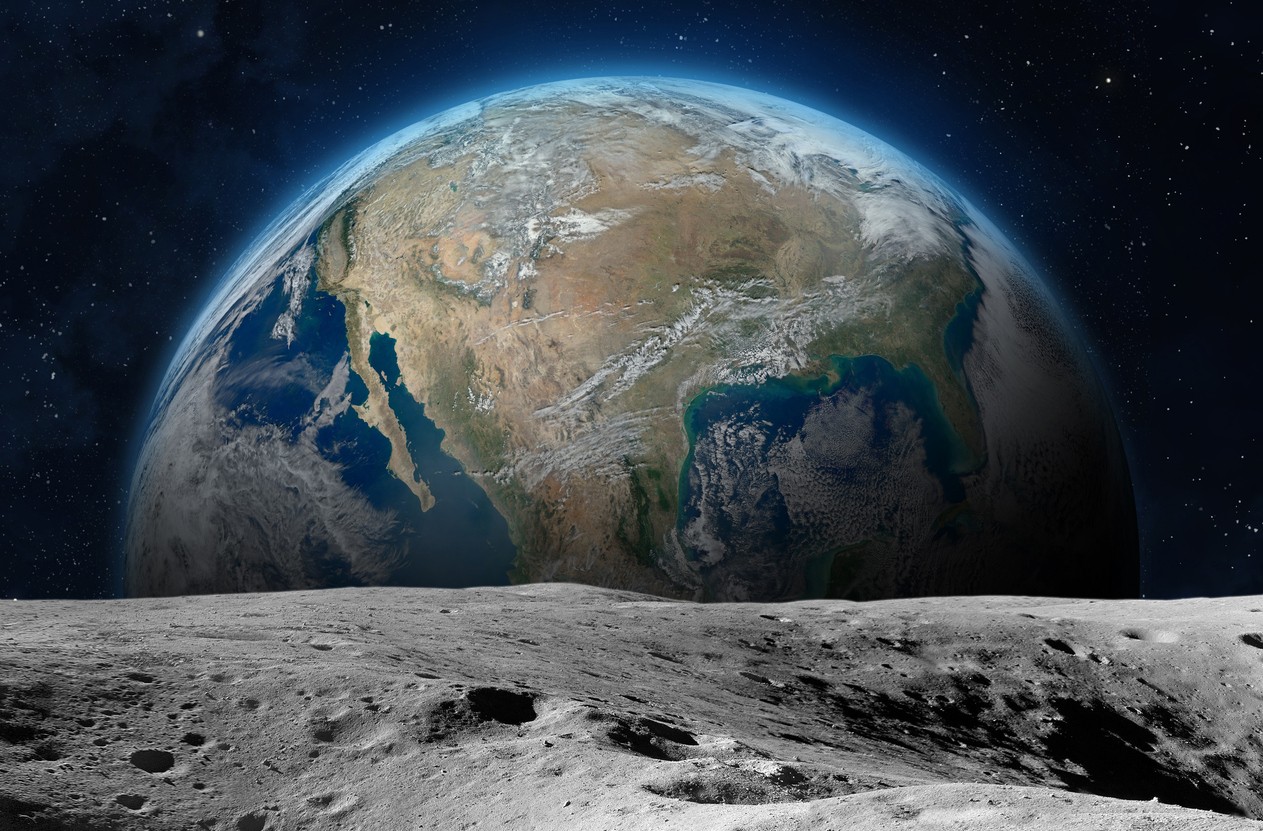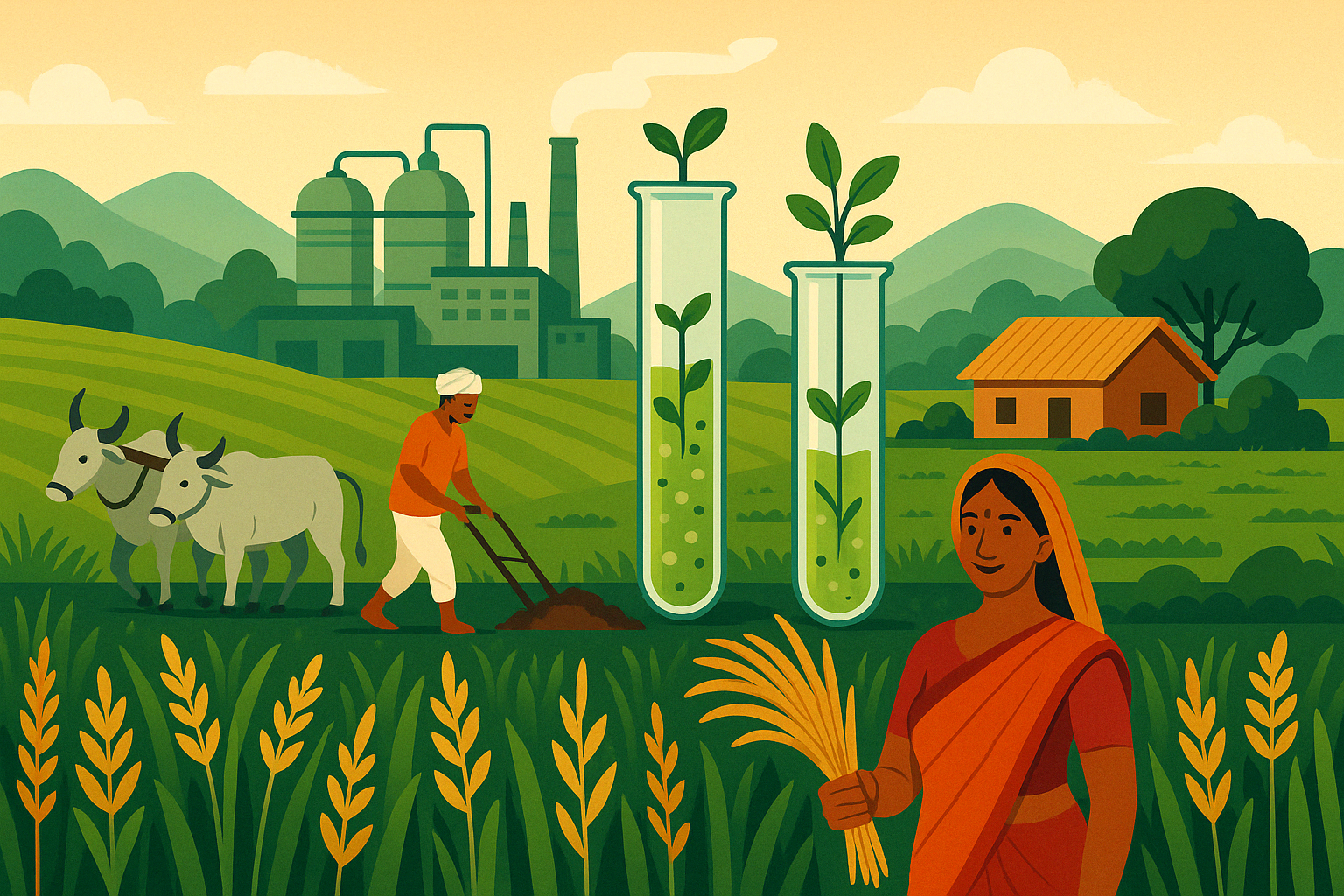An Overview
August 23rd, 2023, has been a historical day for India as India became the fourth country in the world to soft-land on the lunar surface and the first country ever to touch upon the south pole region of the Moon. We are discussing the Chandrayan-3 mission of the Indian Space Research Organization (ISRO).
The Chandrayaan-3 mission is a significant milestone for India's space program. It is the first time that India has attempted to soft-land a spacecraft on the lunar surface since the Chandrayaan-2 mission in 2019. The Chandrayaan-3 mission is complex and challenging, but it can significantly contribute to our understanding of the Moon and its potential resources. The mission's success would be a major achievement for India and help advance the space exploration field.
The main objectives of the Chandrayaan-3 mission are:
- Studying the lunar water ice deposits in the polar regions
- Investigating the lunar soil for potential resources
- Characterising the lunar surface and atmosphere
- Measuring the lunar gravity field
- Studying the lunar environment for potential hazards to future human missions
Not only these, but the success of this mission will also impact the growth of the Indian economy and other related industry sectors. The mission will create new jobs, boost research and development, and attract foreign investment. It will also help to improve India's image as a leading spacefaring nation.
Economic Impact
The economic impact of India's Chandrayaan-3 mission is likely to be significant. According to a study by the Indian Institute of Management Bangalore, the Chandrayaan-3 mission could generate up to $3 billion in economic activity in India. The study found that the mission would create 10,000 direct and 50,000 indirect jobs. It would also boost research and development spending by $1 billion and attract $500 million in foreign investment.
The Chandrayaan-3 mission will likely improve India's image as a leading spacefaring nation. This could increase trade and investment opportunities and improve access to international markets.
Here are some specific ways in which the Chandrayaan-3 mission could impact the Indian economy:
- Job Creation: The mission is expected to create new jobs in the aerospace, defence, telecommunications, and remote sensing industries. These jobs will be in research and development, manufacturing, and operations.
- Research and Development: The mission will boost research and development spending in India. This will lead to the developing of new technologies and products, which could create new businesses and jobs.
- Foreign Investment: The mission will likely attract foreign investment in the Indian space industry. This investment could help to fund future space missions and research projects.
- Improved Trade and Investment Opportunities: The Chandrayaan-3 mission could improve India's trade and investment opportunities. This is because the mission will demonstrate India's capabilities in space technology and research.
- Improved Access to International Markets: The Chandrayaan-3 mission could help India access international space products and services markets. The mission will demonstrate India's commitment to space exploration and development.
- Industrial Growth: The space industry has a supply chain with various manufacturers and suppliers. The demand for components, materials, and systems related to space missions can drive growth in these industries, leading to increased production and economic activity.
- Education and Workforce Development: Successful space missions inspire and engage students in STEM (science, technology, engineering, and mathematics) fields. This can lead to a more skilled workforce, contributing to the growth of technology-driven industries.
The economic impact of the Chandrayaan-3 mission is likely to be felt over the long term. The mission will help to build a strong foundation for the Indian space industry, which could lead to significant economic benefits in the future.
Emerging Technology Trends in the Space Industry
The Chandrayaan-3 mission is expected to impact technology innovations in India and worldwide significantly. The mission will help to develop new technologies for space exploration, generate new data and insights that could be used to develop new applications for space-based technologies and grow the Indian space industry.
Major players such as ISRO and NASA use advanced satellite systems and have embraced new technology, ranging from 3D printing to quantum computing to 5G, to enhance their capabilities. Apart from these, new trends, such as space robotics and smart propulsion, are gaining significant traction.
- Small Satellites: Small satellites, also known as nanosatellites and microsatellites, are becoming increasingly popular due to their lower cost and shorter development time. They are used for various applications, such as Earth observation, communication, and navigation. Small satellite technology has grown significantly in recent years, with government agencies and private companies developing and deploying small satellite constellations for various purposes. This trend is expected to continue, with advancements in miniaturised technology and more accessible access to space.
- 3D Printing: 3D printing creates various space components, such as satellites, launch vehicles, and spacesuits. It is a more efficient and cost-effective way to manufacture these components. 3D printing is still a relatively new technology, but it has the potential to revolutionise the way we build and maintain spacecraft. As the technology continues to develop, we can expect to see even more innovative applications of 3D printing in space.
- Artificial Intelligence (AI): AI is used in various ways in the space industry, such as for satellite navigation, mission planning, and anomaly detection. It also develops new space applications, such as autonomous robots. The future of AI for the space industry is very exciting. AI can revolutionise space exploration and make it possible to explore new worlds and make discoveries. As AI technology continues to develop, we can expect to see even more innovative and groundbreaking applications of AI in space exploration in the years to come.
- Quantum Computing: Quantum computing is a rapidly developing field with the potential to revolutionise many industries, including space exploration. Quantum computers can solve problems intractable for classical computers, leading to new ways to explore space, develop new technologies, and make discoveries. A few potential applications of quantum computing for space are secure communications, navigation, data analysis, simulations, and material design.
- Big Data and Analytics: With the increasing volume of data collected from space missions, technology helps manage and analyse big data. Advanced analytics techniques provide insights into space phenomena and aid in scientific discoveries. Big data and analytics are integral to space exploration and management. They enable scientists, engineers, and space agencies to extract valuable insights from vast datasets, make informed decisions, and advance our understanding of the cosmos. As technology continues to evolve, the role of big data and analytics in space-related activities will become even more critical.
- Blockchain Technology: Blockchain technology has several potential applications in the space industry, from enhancing satellite communication to supporting space resource utilisation and improving space mission management. While the potential applications of blockchain in space are promising, it's essential to consider the technical and regulatory challenges that may arise.
- Sustainable Space Exploration: There is a growing focus on sustainable space exploration, which includes using renewable energy sources, reducing waste, and minimising the environmental impact of space activities. An example of sustainable space exploration is removing space debris. Space debris is a major problem that threatens the sustainability of space exploration. Space debris is made up of objects that have been left in orbit around Earth, such as old satellites, rocket parts, and other spacecraft. This debris can collide with active spacecraft, causing damage or even destroying them.
- Predictive Maintenance: IT-driven predictive maintenance techniques help identify potential issues with spacecraft components before they become critical, ensuring the longevity and reliability of space missions. Predictive maintenance for space systems involves using advanced data analytics, sensors, and AI to predict when space equipment, spacecraft, or infrastructure components will likely fail or require maintenance. This approach helps space agencies and organisations plan maintenance activities more efficiently, reduce the risk of mission failures, and extend the lifespan of space assets.
- Cybersecurity: As the space industry relies heavily on digital systems and networks, cybersecurity is crucial to protect sensitive mission data from unauthorised access, manipulation, or disruption. Some of the most common cyberattacks against space systems include malware, phishing, DDoS attacks, and zero-day attacks.
Growth Opportunities for Related Industry Sectors:
- Space Research and Exploration: Using advanced technology, scientists study the Moon's geology, mineralogy, water resources, and volcanic activity. They also investigate the Moon's formation and evolution and the possibility of volcanic activity. Recent interest focuses on exploiting the Moon's water resources, identifying and extracting resources, and developing technologies for sustainable human life on the Moon.
- Technology Industry: Advanced Propulsion Systems are novel technologies that allow spacecraft to travel faster and further in space. These propulsion systems are indispensable for deep space exploration and research missions. In addition to propulsion systems, other advanced technologies play a vital role in ensuring the success of space missions, such as autonomous navigation, communication and data relay systems, and robotic manipulation and sample collection techniques. These technologies enable spacecraft to navigate through space independently, communicate with Earth and other spacecraft, and collect and analyse samples from various celestial bodies.
- Aerospace Industry Growth: The Company plans to manufacture aerospace components for spacecraft and provide comprehensive services to support the space industry, including cutting-edge launch vehicle technology, satellite integration and testing, and export opportunities for space hardware. And it is fully dedicated to delivering high-quality solutions that effectively meet the unique needs of our clients. Doing so will advance the space industry and enhance our understanding of the universe.
- Space Tourism: Embark on a captivating journey of Space Tourism and explore the marvels of the universe through an array of engaging activities. Immerse yourself in a virtual reality tour of the Moon and experience the exhilaration of walking on its surface, all from the comfort of your own home. Engage with interactive space science exhibits thoughtfully designed to educate and entertain visitors of all ages. Attend astronomy outreach events and gain the opportunity to witness the spectacular wonders of the cosmos, guided by experts and their telescopes. With such a wealth of enthralling experiences, Space Tourism offers the perfect medium to encounter the enchantment of space. Space tourism is a growing industry enjoyed by people who want to travel to space for leisure. It has gained attention due to companies like SpaceX, Blue Origin, and Virgin Galactic.
- Environmental and Planetary Protection: Assessing the potential biological contamination from space exploration is crucial for preserving extra-terrestrial ecosystems and protecting our biosphere. Implementation and adherence to strict planetary protection protocols are necessary to achieve this. By doing so, we can contribute to international space governance and promote responsible cosmos exploration. Therefore, it is essential to prioritise establishing effective mechanisms to ensure the safety of both terrestrial and extra-terrestrial ecosystems. This will require the cooperation and coordination of all space exploration stakeholders to mitigate potential risks and uphold ethical standards.
- Space Mining: India has the potential to become a leader in space mining, an emerging industry with enormous potential. Investing in the research and development of space mining technologies can significantly achieve this goal. Though there are challenges, such as high costs, technical difficulties, and legal issues, they can be overcome. India must develop specific facilities for lunar and asteroid mining and space manufacturing to succeed in this field.
- Space Component Manufacturing: The space components market is growing due to increasing demand for space-based applications and services. Key factors driving growth include satellite constellations, the Internet of Things (IoT), and new space technologies. Opportunities include communication, Earth observation, navigation, and space exploration. High-demand components are payloads, structures, electronics, propulsion, and materials. Although challenging, this market offers great potential for innovation and success.
- Microgravity Research: Microgravity environments in space offer many applications across various industries, such as pharmaceuticals, materials science, manufacturing, electronics, energy, and environmental research. Companies for efficient drug development, stronger materials, improved electronics, and sustainable energy and environmental research can harness the unique conditions of space. Public-private partnerships can facilitate access to microgravity environments for research and development, and companies should secure investment to develop space-based projects. Companies must conduct comprehensive research, consider partnerships, secure investment, and embrace sustainable practices to thrive in this emerging market.
Growth Prospect
The successful landing of Chandrayaan-3 by India's space program on the south pole of the Moon is a momentous achievement. This remarkable feat is poised to catalyse significant private investment in the space sector, unlocking new job opportunities and fostering innovation. Additionally, it has the potential to position India as a dominant player in the global space economy, creating new opportunities for satellite communication, Earth observation, and space tourism. The successful conclusion of this mission has the potential to be a game-changer for the Indian economy, generating millions of jobs, driving innovation, increasing exports, and boosting revenue in the rapidly growing space tourism industry.





